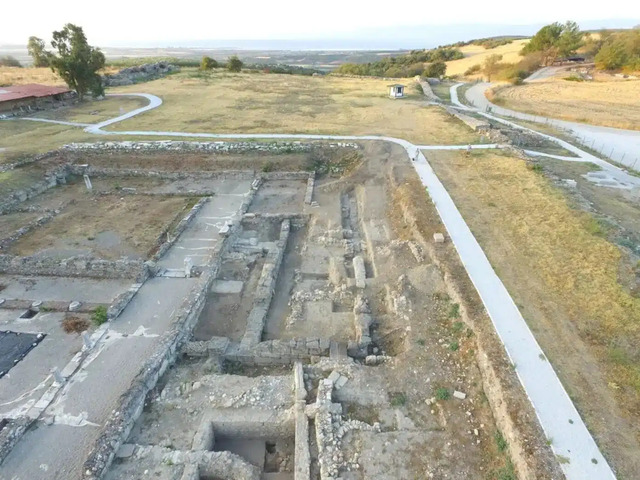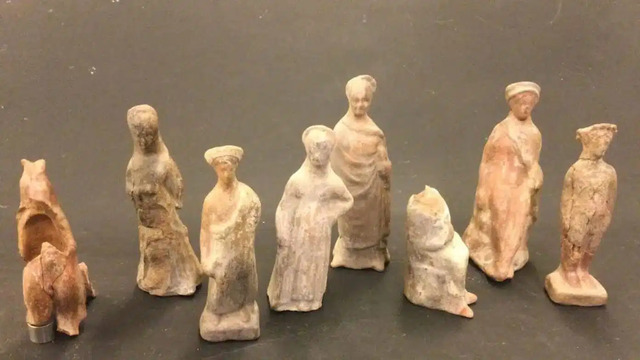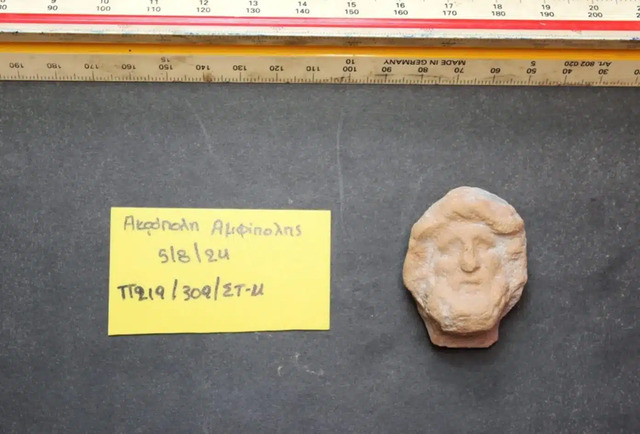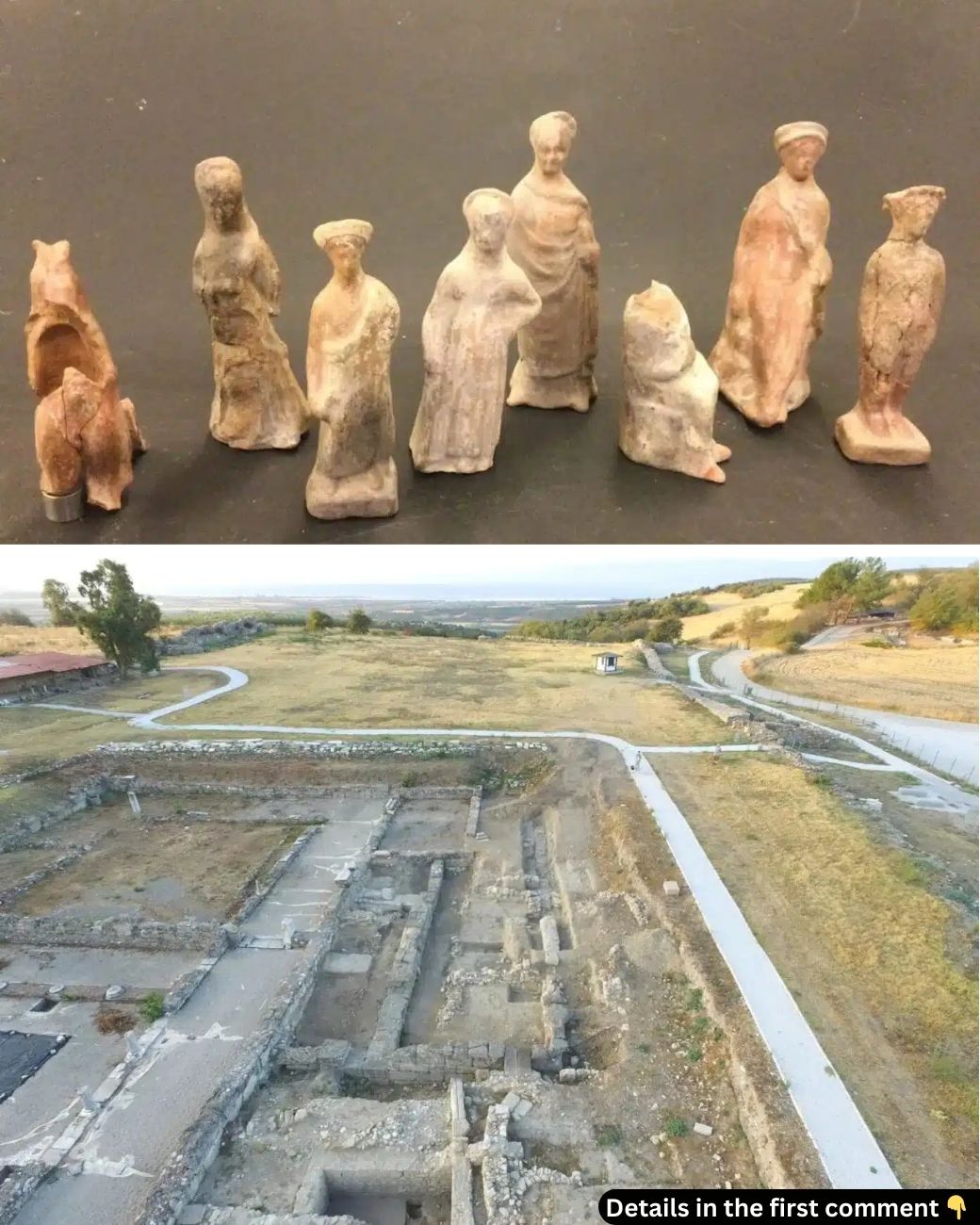Amphipolis, a historical gem nestled in the heart of ancient Macedonia, continues to capture the fascination of archaeologists and history enthusiasts alike. Known for its strategic location and rich history, this once-thriving city of ancient Greece has revealed new insights into its past through recent excavations. Among the most intriguing discoveries are the uncovering of a cultic building, stunning figurines, and even a child’s tooth—each shedding light on the cultural and religious practices of the time. In this article, we will delve into the significance of these findings and explore how they contribute to our understanding of Amphipolis and its role in the ancient world.
Uncovering the Cultic Building
In 2024, excavations at the Acropolis of Amphipolis focused on an area west of the early Byzantine Basilica III. Here, archaeologists uncovered the remains of an elongated rectangular building, characterized by large, well-hewn mud bricks and strong walls. Dating back to the 4th century BC, this building is believed to have served as a cultic structure, potentially dedicated to a female deity.
The layout of the building is particularly fascinating, as it was reconstructed during the 4th century BC, providing crucial insights into the architectural practices of that time. The western part of the structure remains intact, while the rest has been destroyed by the Basilica. This discovery is significant, not only for its historical value but also for what it reveals about the religious practices of the period. The existence of such a building hints at the importance of religious rituals and the role of sacred sites in the daily lives of the ancient inhabitants of Amphipolis.

Video
Notable Finds: Child’s Tooth and Figurines
Among the most striking discoveries at the site were a child’s tooth, animal figurines, and various other items associated with religious rituals. The child’s tooth, found in a non-burial context, has raised intriguing questions about its purpose. It is believed to be a votive offering, possibly linked to a ritual dedicated to the patron goddess. This find, combined with the variety of other objects uncovered, provides evidence of the cultic activities that took place in the building.
Figurines also played a pivotal role in understanding the religious practices of the time. Among the finds were clay female figurines, some of which were accompanied by figurine wombs, shells, and animal bones. These items, buried within a charcoal-rich layer, suggest that the site was not only a place of worship but also a center for the performance of rituals. The variety and concentration of these objects strongly point to the presence of rituals associated with fertility, birth, and transition.

The Worship of Artemis at Amphipolis
The connection to the worship of Artemis is particularly significant. The site appears to have been dedicated to the goddess Artemis, whose role in protecting young girls during their transition to womanhood was a central aspect of her worship. The discovery of a torso of Artemis, although in poor condition, supports this theory. Additionally, a horse bust and oyster shells found at the site further reinforce the link to Artemis. The oysters, symbolizing the onset of menstruation, suggest that young girls participated in ritual meals where they left offerings as part of their coming-of-age ceremonies.
Artemis’s association with the protection of young girls is one of the most fascinating aspects of her worship. As a deity revered for her strength and independence, Artemis was often depicted as a protector, not just in mythology but also in the rituals that took place at sacred sites like Amphipolis. The evidence gathered from the site provides a deeper understanding of how these rituals were conducted and their importance in the lives of ancient Greek communities.
The Role of Asclepius and Other Deities
Another key discovery at Amphipolis was the small clay head of Asclepius, the god of medicine and healing. Asclepius is often depicted alongside Artemis, as both gods shared a connection through their roles in healing and protection. This discovery further strengthens the idea that the site was dedicated to Artemis, with Asclepius serving as a secondary figure in the religious practices observed at the site.

The presence of other deities, such as Pan, further emphasizes the complex nature of the cultic practices at Amphipolis. A clay statuette of Pan, found alongside the remains of charred fruits, suggests that his worship was also present at the site. Pan, the god of the wild and shepherds, was often invoked in rituals related to fertility and nature. His inclusion in the archaeological findings highlights the syncretic nature of ancient Greek religion, where multiple deities were worshipped in conjunction with one another.
The History and Importance of Amphipolis
Amphipolis was once a bustling city, playing a significant role in both ancient Greek and Roman history. Founded as a colony of Athens, it became a key site for military and political events, including the famous battle between the Spartans and Athenians in 422 BC. The city also served as a base for Alexander the Great’s admirals during his campaigns in Asia, cementing its place in the annals of history.
The archaeological site of Amphipolis is rich in ancient structures, including temples, walls, and royal tombs. These remains offer invaluable insights into the city’s development and its role in the broader context of ancient Greek culture. The discovery of the Amphipolis Tomb, or Kasta Tomb, has captured the imagination of archaeologists and the public alike. The tomb’s size and grandeur suggest it was built for someone of significant importance, though the identity of the occupant remains a mystery.
The Mysterious Amphipolis Tomb
The Kasta Tomb, discovered in 2012, is one of the most significant finds at Amphipolis. It is the largest burial mound ever discovered in Greece, surpassing even the tomb of Philip II of Macedon. The tomb’s size and elaborate design have sparked widespread speculation about the identity of the person buried within. Some experts believe the tomb may house the remains of one of Alexander the Great’s family members, possibly his mother, Olympias, or even Alexander himself.
The ongoing excavation of the tomb continues to intrigue archaeologists, with each new discovery offering fresh clues about its origins. The tomb’s scale and the wealth of artifacts found within it suggest that the individual buried there held immense political and cultural significance. The mystery surrounding the tomb’s occupant only adds to the allure of Amphipolis as an archaeological site.
Video
Watch the video of Amphipolis: The Kasta Tomb in 3D reconstruction.
Conclusion
The recent excavations at Amphipolis have provided valuable insights into the religious and cultural practices of ancient Greece. The discovery of a cultic building, along with figurines, a child’s tooth, and the head of Asclepius, offers a fascinating glimpse into the rituals that took place at the site. Furthermore, the connection to Artemis and the evidence of cultic practices dedicated to her highlight the importance of religious worship in ancient Greek society.
Amphipolis, with its rich history and ongoing excavations, continues to be a key site for understanding the complexities of ancient Greek civilization. As new discoveries are made, they contribute to our growing knowledge of the past and help unravel the mysteries of this ancient city. The city’s legacy, from its role in the campaigns of Alexander the Great to its religious significance, ensures that Amphipolis remains an enduring symbol of ancient Greek history and culture.



